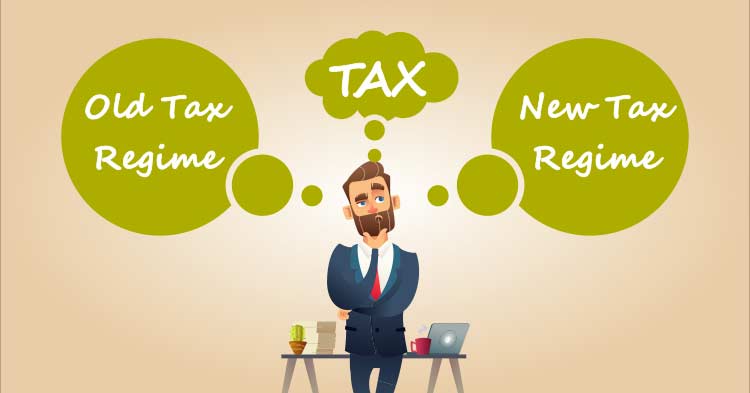
New VS Old Tax Regime: Which One Should You Choose? (5Mins)
The Indian government has introduced a new tax regime in its budget for the financial year 2020-21. Under the new regime, taxpayers have the option to choose between the old tax regime and the new tax regime. In this blog post, we will discuss the differences between the old and new tax regime and help you decide which one to choose.
Old Tax Regime
Under the old tax regime, taxpayers were eligible for various deductions and exemptions. The most popular deductions were under Section 80C, which allowed taxpayers to claim a deduction of up to Rs. 1.5 lakh on investments in instruments such as Public Provident Fund (PPF), National Savings Certificate (NSC), Equity-Linked Saving Scheme (ELSS), and others.
Apart from Section 80C, taxpayers were also eligible for deductions under various other sections of the Income Tax Act. For instance, Section 80D allowed taxpayers to claim a deduction of up to Rs. 25,000 on health insurance premiums, while Section 24 allowed taxpayers to claim a deduction of up to Rs. 2 lakh on home loan interest payments.
New Tax Regime
Under the new tax regime, taxpayers do not have access to the deductions and exemptions that were available under the old tax regime. However, the tax slabs have been revised, resulting in lower tax rates for certain income brackets. The new tax slabs are as follows:
- Income up to Rs. 2.5 lakh: Nil tax
- Income between Rs. 2.5 lakh and Rs. 5 lakh: 5% tax
- Income between Rs. 5 lakh and Rs. 7.5 lakh: 10% tax
- Income between Rs. 7.5 lakh and Rs. 10 lakh: 15% tax
- Income between Rs. 10 lakh and Rs. 12.5 lakh: 20% tax
- Income between Rs. 12.5 lakh and Rs. 15 lakh: 25% tax
- Income above Rs. 15 lakh: 30% tax
Which One Should You Choose?
The decision to choose between the old tax regime and the new tax regime depends on various factors such as your income level, investments, and expenses. Here are a few scenarios to help you decide:
Scenario 1: You do not have any investments or expenses that qualify for deductions under the old tax regime.
In this case, it may be beneficial for you to opt for the new tax regime. The new tax slabs offer lower tax rates for certain income brackets, which could result in lower tax liability for you.
Scenario 2: You have investments and expenses that qualify for deductions under the old tax regime, but your income level is low.
If your income level is below Rs. 5 lakh, you may be better off opting for the old tax regime. The deductions and exemptions available under the old tax regime can help you reduce your tax liability, resulting in lower taxes overall.
Scenario 3: You have investments and expenses that qualify for deductions under the old tax regime, and your income level is high.
If your income level is above Rs. 15 lakh, it may be beneficial for you to opt for the new tax regime. The new tax slabs offer lower tax rates for income levels above Rs. 15 lakh, which could result in lower tax liability for you.
Scenario 4: You have investments and expenses that qualify for deductions under the old tax regime, and your income level is moderate.
If your income level is between Rs. 5 lakh and Rs. 15 lakh, you may need to do some calculations to decide which tax regime is better for you. The deductions and exemptions available under the old tax regime can help you reduce your tax liability.
Finally, which option you go with is something you should decide for yourself or in consultation with you financial advisor.
Latest Blog
Are KPIs Killing Productivity? Rethinking Performance Reviews in Indian Workplaces
Demystifying India’s New Labour Codes: What SMBs Need to Know
Navigating the Shift: The Rising Importance of Contemporary People Practices in Indian SMEs
Navigating Job Interviews with Emotional Intelligence and Soft Skills